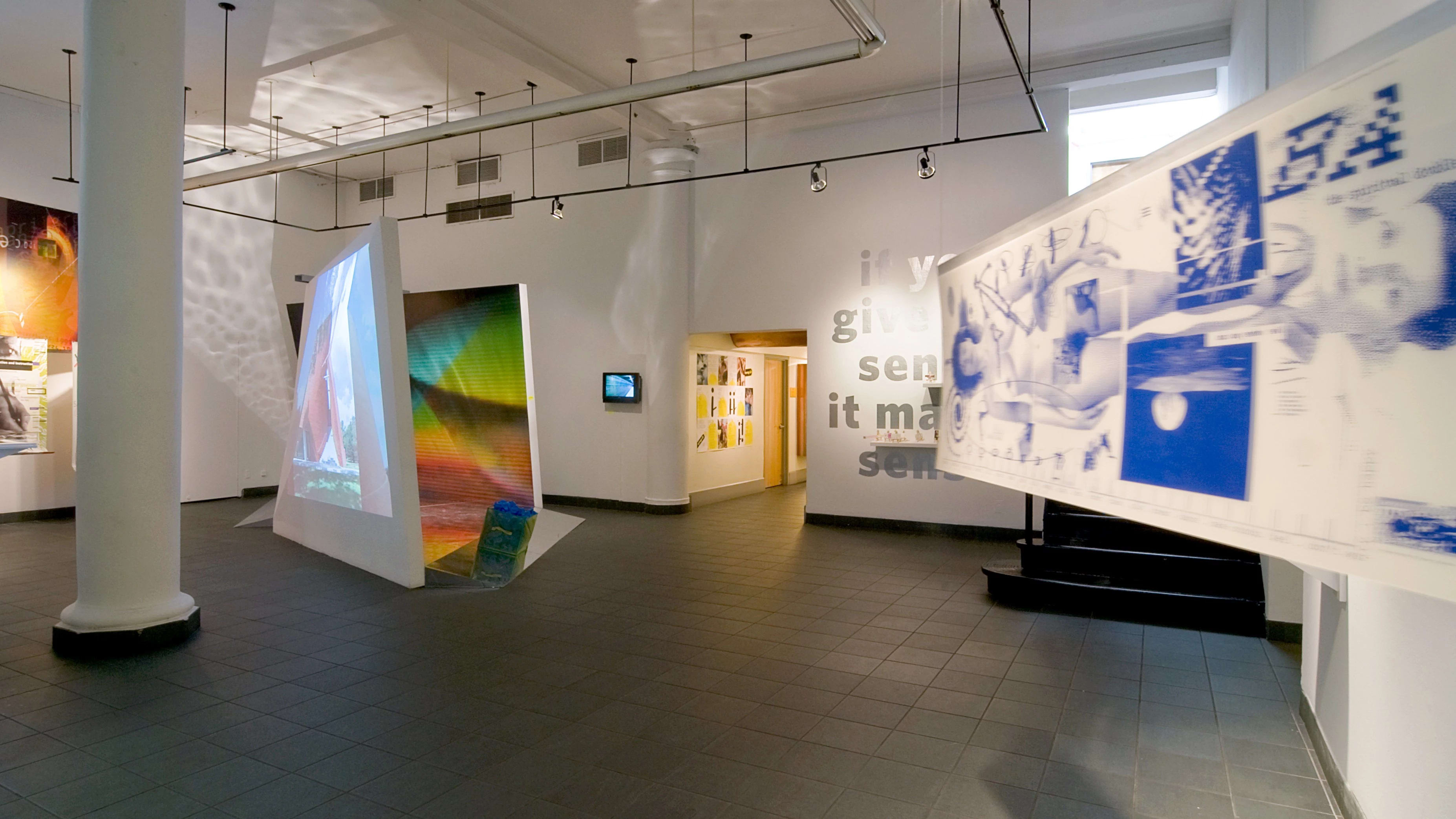Exhibition
The Masters Series: April Greiman

Visual Arts Museum
209 East 23rd Street, New York, NY 10010Reception
Mon, Oct 20; 6:00 - 8:00pm
“a prophet, a teacher, a hotelier, an environmental artist, a businesswoman, a technophile and a technophobe” - Lewis Blackwell, from Something from Nothing
School of Visual Arts (SVA) will honor April Greiman with the Masters Series Award and retrospective exhibition. One of the first American designers to embrace digital technologies, Greiman has explored the intersection of art, design and architecture for more than a quarter century. Born and raised in New York, she now heads the Los Angeles design consultancy Made In Space. "April Greiman: Does It Make Sense?" will be on view from October 20 through December 13, 2008, at the Visual Arts Museum.
“April Greiman was a bridge between the modern and postmodern, the analog and the digital,” says Steven Heller, design historian and co-chair of the MFA Design Department at SVA. “She is a pivotal proponent of the ‘new typography’ and new wave that defined late twentieth-century graphic design.”
April Greiman’s unique contribution to visual culture is evident in the breadth of her portfolio, with commissions ranging from a US postage stamp commemorating the Nineteenth Amendment (which extended the vote to women) to an LED installation for the 31-story Accenture Tower in Minneapolis. These works will be represented in the exhibition at SVA alongside a selection of groundbreaking posters, identity systems and recent experimental videos and digital photographs. Long interested in the built environment, Greiman has frequently collaborated with architects, among them Frank Gehry and Michael Rotondi of RoTo Architects. For this retrospective, she has sought guidance from the “gravity consultants” at RoTo Architects and B+U, a Los Angeles architecture firm whose work is informed by mapping and transforming imperceptible forces, including sonograms, sounds and magnetism.
Greiman is renowned for her experiments with the Apple Macintosh computer, having acquired one shortly after its release in 1984. At about the same time she began to merge video, a medium she had worked with since the 1970s, with print graphics. Using digitized images that flaunted their electronic origins, she set about unleashing the creative potential of the latest technologies. At the same time, in her unabashedly intuitive approach to layout and composition, Greiman introduced a new subjectivity into contemporary design practice. A foldout poster she created for Design Quarterly in 1986, featuring a life-size nude self-portrait overlaid with various symbols of personal significance, announced the designer’s intention to “think with the heart” and reach her audience emotionally. This was the first of a number of important commissions from Mickey Friedman, then editor of Design Quarterly and a longtime design curator at the Walker Art Center. (Greiman and Friedman later collaborated on “The Gehry Experience,” an exhibition organized for the opening of the Experience Music Project, Seattle.)
Greiman was equally alert to the creative potential of the Internet in its infancy, recognizing it as a new medium that called for a new visual vocabulary. In 1987 she received a grant from the National Endowment for the Arts to explore Web and state-of-the-art technology like Quantel PaintBox, software used to create video and graphics for television. She started Greimanski Labs as an offshoot of her studio to research the capacity of new technologies for image making in a non-commercial setting. She has created identities and Web sites for institutions like the Southern California Institute of Architecture (SCI-Arc) and the MAK Center for Art and Architecture at the Schindler House, the Los Angeles satellite of the Austrian Museum of Applied Art, Vienna.
In her work with architects, Greiman has been much sought-after for her expertise in color, surfaces and materials, whether applied to building interiors, exteriors or campuses. The first major commission of this type was the Cerritos Center for the Performing Arts (1993) in Southern California, which included the design of exterior tiles and other architectural elements as well as graphics, an identity system and printed pieces. She has worked closely with RoTo Architects on several projects, including: the Dorland Mountain Arts Colony (1993-1994), a hand-built studio and retreat set on a nature preserve in southern California; the Reges House (1992-1996), a rehab of an existing electrical building in downtown Los Angeles; and Warehouse C (1997), a mixed-use pier that enlivens the skyline of Nagasaki, Japan.



